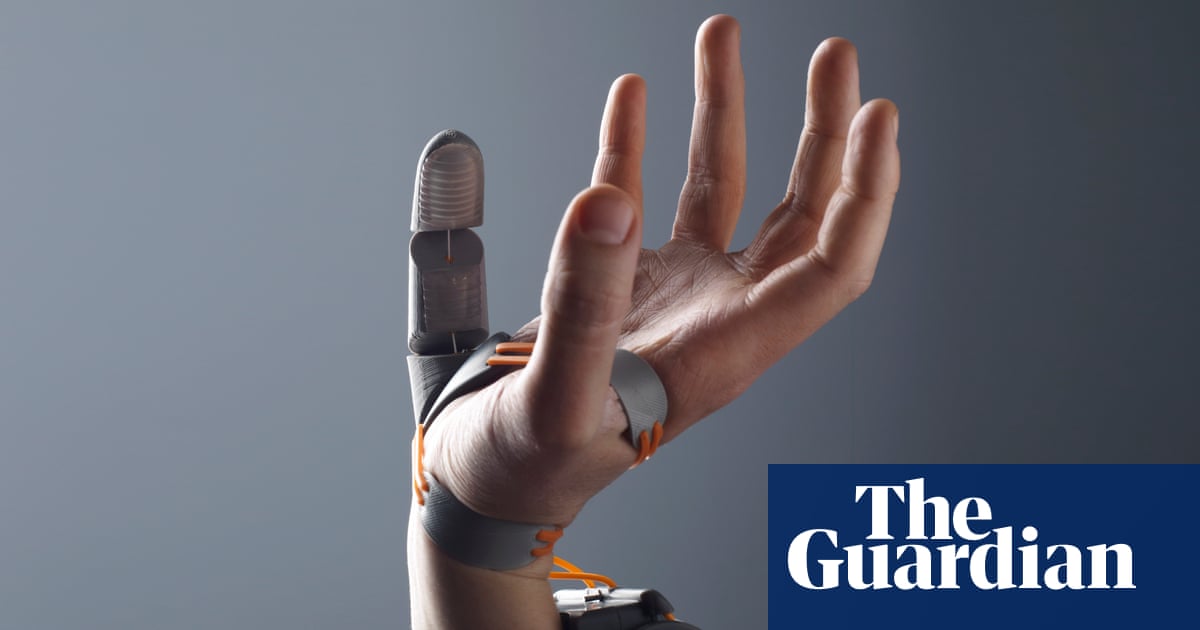
Whether it is managing childcare, operating on a patient or cooking a Sunday dinner, there are many occasions when an extra pair of arms would come in, well, handy.
Now researchers say such human augmentation could be on the horizon, suggesting additional robotic body parts could be designed to boost our capabilities.
Tamar Makin, a professor of cognitive neuroscience at the MRC cognition and brain unit at Cambridge University, said the approach could increase productivity.
“If you want an extra arm while you’re cooking in the kitchen so you can stir the soup while chopping the vegetables, you might have the option to wear and independently control an extra robotic arm,” she said.
The approach has precedence: Dani Clode, a designer and colleague of Makin’s at Cambridge University, has already created a 3D-printed thumb that can be added to any hand. Clode will be discussing the device as part of panel on “Homo cyberneticus: motor augmentation for the future body” at the annual meeting of the American Association for the Advancement of Science (AAAS) in Washington DC on Friday.
Makin said the extra thumb could be helpful for waiters holding plates, or for electrical engineers when soldering, for example, and other robotic body parts could be designed for particular workplace needs. For example, extra arm could help a builder hammer a nail while holding a joist in place.
“We spoke with a surgeon [who] was really interested in holding his camera whilst he’s doing shoulder surgery, rather than his assistant holding his camera,” said Clode. “He wanted to be in full control of the tools that he’s using with the two hands whilst also holding that camera and being able to manipulate that as well.”
The team say robotic body parts could allow far more control than a simple mounted device, with their operation inspired by our natural mechanisms of agency. “We want something that we’d be able to control [very] precisely without us having to articulate what it is exactly that we want,” said Makin.
She said the team’s approach was rooted in the idea that the additional appendages could be used to build on the existing capabilities of a person’s body.
“If you’re missing a limb, instead of trying to replace that limb, why don’t we augment your intact hand to allow you to do more with it?” she said. But the team envisage such devices also being used by people who are not living with disabilities.
Clode said an important feature of human augmentation devices is that they do not take away from the wearer’s original capabilities. “[It’s] a layer on the body that can be used with the least amount of impact as possible for the most amount of gain,” she said.
A key aspect of that, Clode added, is that – unlike a spade being used to increase our abilities to dig a hole – such robotic body parts must not be hand-operated.
The extra thumb, for example, is connected to two wrist-based motors that are hooked up to a battery and microcontroller on the upper arm. This system is wirelessly connected to microcontrollers mounted on the wearer’s shoes or ankles, which are connected to pressure sensors underneath the two big toes. “You press down on these pressure sensors – and that’s what controls the thumb,” said Clode.
But Makin said the approach has raised new questions. “We’re doing a lot of research at the moment to see what it does to your nervous system if you start reappropriating your toes to become an extra finger – how much [does] it affects your ability to use your toes as a toe?” she said.
Some laboratories have focused on the possibility of using electrodes in the brain or spinal cord to control external devices, but Makin believes there is no ethical justification for such an invasive approach in otherwise healthy humans.
When Clode recently carried out research at the Royal Society summer science exhibition, in which members of the public were given the chance to try out the extra thumb, the results were striking.
“[Of around] 600 people between the age of three and 97, 98% could use it within the first minute, meaning … they could already move objects around as instructed,” said Makin. “I can’t imagine a brain chip that can do that.”












